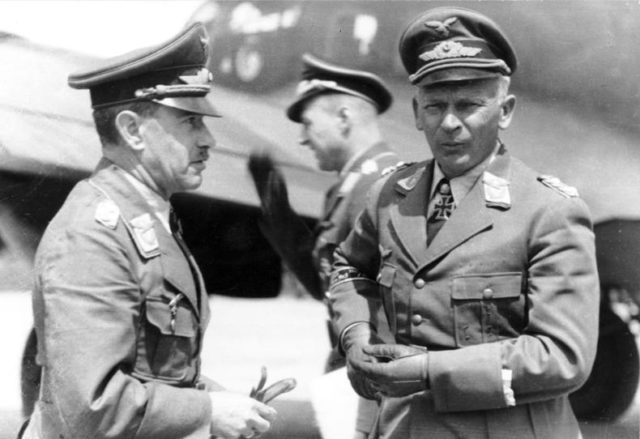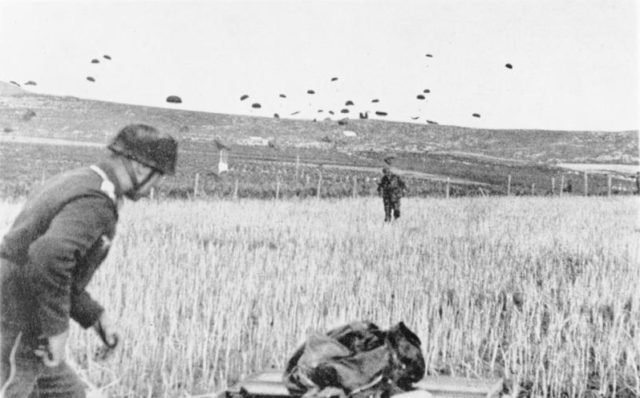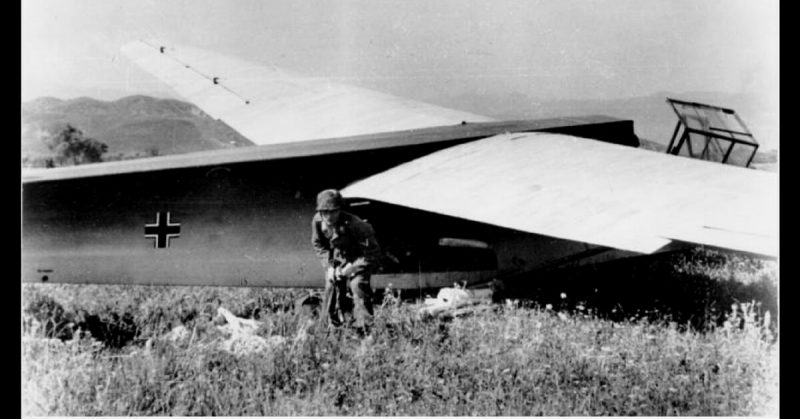The invasion of Crete was an impressive campaign of WWII. A significant battle during the seizure was the advance on Canae. German paratroopers fought fiercely against New Zealanders for control of the strategically important town.
Invading Crete
In May 1941, German and Italian troops drove the British out of Greece. However, the Allies remained in control of the island of Crete and its strategically vital air bases.
Crete defended British supply lines to North Africa, where the Allies were successfully fighting the Axis forces. The Crete air bases lay within striking distance of Romania’s oil fields, which provided Germany with much of its fuel. The impending invasion of Russia by Germany, although intended to secure oil supplies in the long term, would temporarily deprive the Germans of Russian fuel as trade ended. The Romanian oil was essential and therefore capturing Crete was crucial to the Germans. To achieve it, they undertook the first great paratroop invasion in history.
The impending invasion of Russia by Germany, although intended to secure oil supplies in the long term, would temporarily deprive the Germans of Russian fuel as trade ended. The Romanian oil was essential and therefore capturing Crete was crucial to the Germans. To achieve it, they undertook the first great paratroop invasion in history.

The Rosary Paratrooper
Among the German paratroop officers was Friedrich August Freiherr von der Heydte. A consummate professional, Heydte was known as the Rosary Paratrooper, a name given to him by his detractors because of his staunch Catholicism.
Commanding the 1st Battalion of the 3rd Parachute Regiment, Heydte played a critical role in the battle for Crete. Central to the invasion was the landing of large battle forces in the north of Crete. The 3rd regiment formed part of Battlegroup Centre.
A Rough Landing
The invasion began early on May 20, 1941.
The German paratroopers had a rough landing on the island. The Greek and New Zealand soldiers defending the drop zones were better prepared than the Germans expected. Troops were scattered over a wide area and landed under fire. Equipment was lost, and men drowned in a reservoir. The 3rd Parachute Regiment were dropped south of Canae. They had been widely dispersed and were under heavy attack.

Heydte landed in a fig tree and had to cut himself free of his harness. Once he found a few of his men, he set up a headquarters and gathering point at the edge of the drop zone.
Galatas
The firsts challenge for Heydte’s group was the village of Galatas. There, the New Zealanders had set up a strong defensive position.
Problems with the drop had left Heydte without mortars or heavy machine-guns. It meant a frontal attack would be difficult and costly. Instead, he made an indirect attack from the north-east. His men ran short on ammunition, and the attack had to be called off. The New Zealanders remained in Galatas.
Heydte went on the defensive for two days. During that time, more of the scattered German troops were drawn to the sounds of fighting, enlarging his group. With his force grown in strength, he attacked Galatas again.
During the fierce fighting, the village changed hands six times in a matter of days. On the night of the 25th, the severely depleted New Zealanders gave up holding their position and withdrew.
The route to Canae was now open.
Bombing and Flanking
One of the reasons for the fall of Galatas was the arrival of air support. German bomber attacks on May 24 had weakened the Allied troops in both Galatas and Canae.
Meanwhile, advances elsewhere on the island allowed the Germans to regroup and reform their formations. A 50-mile flanking march cut off Canae from Réthimnon and connected Heydte with the rest of the invasion force.
No longer isolated and underequipped, the 1st Battalion were ready to move on.
Akrotiri Heights
On May 27, the Germans launched the main assault on Canae.
On the right flank was Heydte’s battalion. Their task was to capture the Akrotiri heights to the east of the town.
A mountain artillery battery was meant to provide covering fire that advanced toward the objective with the paratroopers behind it. Communication problems hindered it.
Despite the problems, the 1st Battalion took the south-eastern road from the city and displayed signals for an air drop. A force of New Zealand soldiers appeared, racing toward them in British transport vehicles.
A flaw in the battle plan had left Heydte and his headquarters in front of their troops, without infantry to protect them. They stood their ground and opened fire with a pair of machine-guns. They were so effective the New Zealanders quickly surrendered.
Into Canae
With the road to Canae open, Heydte decided not to take the nearby village of Akrotiros but to head straight into town from the south.
As they advanced up the road to Canae, the 1st Battalion faced fewer and fewer Allied soldiers. The attacks of the past few days and even hours had drained the opposing forces.
Soon, Heydte was in the town. He set up a headquarters in the main square, where he had his men raise a flag from a minaret, signaling their presence. He assumed there would still be Allied troops around, so he sent out patrols to see how strong the remaining opposition was.
Victory
The patrols soon returned. Instead of bringing news of Allied troops, they brought two civilians. One was the mayor of Canae, the other an interpreter.
Heydte was a curious sight to see. He was fighting in shirtsleeves, not the jacket of an officer. He had hacked his jumpsuit off at the knees. Having lost his cap, he was wearing a knotted handkerchief on his head to keep off the sun. It took some time to convince the mayor that Heydte was in charge.
In a tavern, the two men drank wine and negotiated the town’s surrender. Canae had fallen. The next day, the Allies began evacuating Crete.
For his part in the invasion, Heydte was awarded the Knight’s Cross of the Iron Cross. It was just one achievement in a distinguished career.
Sources:
Nigel Cawthorne (2004), Turning the Tide: Decisive Battles of the Second World War
James Lucas (1996), Hitler’s Enforcers: Leaders of the German War Machine 1939-1945
